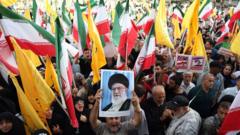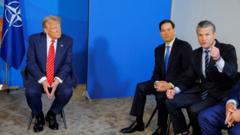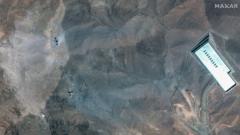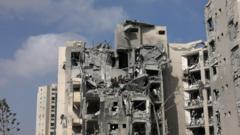The Pentagon's assessment of the aftermath of US strikes on Iran's nuclear sites highlights the ongoing challenge of gauging the impact on Tehran’s program, suggesting a temporarily slowed effort rather than complete destruction.
Leaked US Report on Iran's Nuclear Sites: What We Know and What It Means
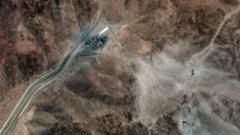
Leaked US Report on Iran's Nuclear Sites: What We Know and What It Means
An analysis of a recent DIA leak reveals the extent of damage to Iran's nuclear program and the implications for future conflicts.
In a notable leak from the Defense Intelligence Agency (DIA), it was revealed that despite a military strike targeting Iran's nuclear sites, key components of the nuclear program remain intact. This insight emerges from the Pentagon's ongoing monitoring of Iran’s efforts, particularly around the high-security facility at Fordo, which is closely scrutinized by Western intelligence.
The leaked assessment categorically states that the damage inflicted by the attacks has only temporarily impeded Iran’s nuclear advancements, scholarly claiming the set back extends for months rather than years. However, these findings are accompanied by a disclaimer of “low confidence,” attributed to the initial stages of damage analysis.
General Dan Caine, Chairman of the Joint Chiefs of Staff, acknowledged that conclusive evaluations of the damage — known as battle damage assessments — would take a significant duration. The complexity of determining damage levels is compounded by the fact that underground elements of the nuclear program are carefully concealed, and satellite imagery cannot ascertain the full extent of damage caused by the bombs employed.
Despite the destructive potential of the munitions used during the strikes, forensic assessments suggest that the fortified construction of the Fordo facility may have helped to shield crucial operational components from total destruction. However, it is speculated that the impact on the centrifuges, which play a critical role in uranium enrichment, may have been detrimental enough to throw many off their operational path.
To build a clearer understanding of the bomb's impact, various forms of intelligence will be essential. This includes seismic sensors capable of detecting underground explosions, radiation detectors, and aerial LIDAR technology to create three-dimensional maps that may unravel hidden infrastructures within the mountainous terrain. Human intelligence, such as intercepting communications, is also sought to glean insights into Iranian operations and damage assessments.
While US officials assert that the strikes have considerably damaged the Fordo site, this does not signify an end to Iran's nuclear ambitions. This is due to the potential for reallocation of resources to undisclosed alternative sites, as well as evidence suggesting that Iran may have moved its stock of highly enriched uranium prior to the attacks.
One particularly observed phenomenon is a fleet of trucks spotted around Fordo, raising critical questions concerning their cargo and subsequent destinations. The potential relocation of centrifuges and uranium could allow Iran to continue its nuclear ambitions elsewhere, albeit at a slower pace.
Despite setbacks triggered by the strikes, the multifaceted nature of nuclear weapon development implies that achieving operational weapons is laden with challenges requiring advanced scientific expertise. A strategy employed by Israel to disrupt progress involved targeting Iranian nuclear scientists, aiming to delay advancements further.
While the US strikes have indeed posed significant obstacles for Iran’s nuclear agenda, the final tally of these setbacks is unclear. Intelligence efforts will intensify as the coming months unfold, particularly if indications surface that Tehran is striving to resurrect its program or hasten towards weaponization.
The leaked assessment categorically states that the damage inflicted by the attacks has only temporarily impeded Iran’s nuclear advancements, scholarly claiming the set back extends for months rather than years. However, these findings are accompanied by a disclaimer of “low confidence,” attributed to the initial stages of damage analysis.
General Dan Caine, Chairman of the Joint Chiefs of Staff, acknowledged that conclusive evaluations of the damage — known as battle damage assessments — would take a significant duration. The complexity of determining damage levels is compounded by the fact that underground elements of the nuclear program are carefully concealed, and satellite imagery cannot ascertain the full extent of damage caused by the bombs employed.
Despite the destructive potential of the munitions used during the strikes, forensic assessments suggest that the fortified construction of the Fordo facility may have helped to shield crucial operational components from total destruction. However, it is speculated that the impact on the centrifuges, which play a critical role in uranium enrichment, may have been detrimental enough to throw many off their operational path.
To build a clearer understanding of the bomb's impact, various forms of intelligence will be essential. This includes seismic sensors capable of detecting underground explosions, radiation detectors, and aerial LIDAR technology to create three-dimensional maps that may unravel hidden infrastructures within the mountainous terrain. Human intelligence, such as intercepting communications, is also sought to glean insights into Iranian operations and damage assessments.
While US officials assert that the strikes have considerably damaged the Fordo site, this does not signify an end to Iran's nuclear ambitions. This is due to the potential for reallocation of resources to undisclosed alternative sites, as well as evidence suggesting that Iran may have moved its stock of highly enriched uranium prior to the attacks.
One particularly observed phenomenon is a fleet of trucks spotted around Fordo, raising critical questions concerning their cargo and subsequent destinations. The potential relocation of centrifuges and uranium could allow Iran to continue its nuclear ambitions elsewhere, albeit at a slower pace.
Despite setbacks triggered by the strikes, the multifaceted nature of nuclear weapon development implies that achieving operational weapons is laden with challenges requiring advanced scientific expertise. A strategy employed by Israel to disrupt progress involved targeting Iranian nuclear scientists, aiming to delay advancements further.
While the US strikes have indeed posed significant obstacles for Iran’s nuclear agenda, the final tally of these setbacks is unclear. Intelligence efforts will intensify as the coming months unfold, particularly if indications surface that Tehran is striving to resurrect its program or hasten towards weaponization.







